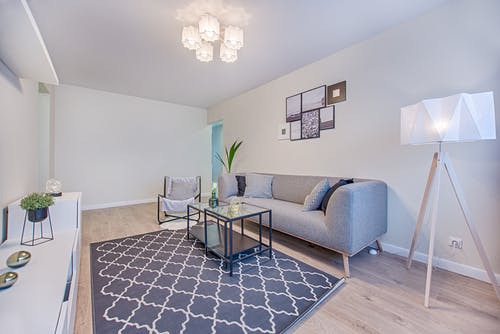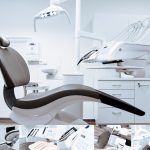
Imagine you’re sitting in a dental chair, the lights dazzle you from above, and you hear the unmistakable whir of dental tools. It’s not exactly the ideal chill-out spot, right? Now, dental appointments can be a breeze for some, but for others, it’s a well of anxiety and discomfort. Enter the superhero of the dental world: sedation. So, let’s explore when sedation steps into the picture and why it’s such a game-changer for dental patients.
What is Dental Sedation?
Dental sedation – it sounds pretty serious, doesn’t it? But let’s clear things up a bit. It’s a handy method that helps patients relax during dental procedures. We’re not just talking about those gnarly surgeries either; it’s for anything that might stir up a bit of fear or pain. There are different levels of sedation – from feeling like you’re floating on a cloud but still awake, to being in a deep sleep and not remembering a single thing. Dentists are magicians in their own right, using sedation to make sure you’re comfy and anxiety-free.
-
When Anxiety Hits Hard: So, when should a dentist recommend flipping the switch on sedation? High anxiety is at the top of that list. If just thinking about climbing into a dental chair makes your palms sweaty and heart race, sedation can be your safe haven. It can help you transform from anxiety-riddled to cool as a cucumber.
-
A Low Pain Threshold: Let’s face it, not everyone can handle the same amount of discomfort. Even a simple cleaning might send shivers down your spine if you’ve got a low pain threshold. Dentists can use sedation to dial down the pain and keep things as close to painless dentistry as possible.
-
When Time Flies in the Chair: Doing work that will take hours? Instead of watching the clock tick torturously, sedation can make it seem like a quick hop, skip, and jump. For complex procedures, like those involving bar attachment denture options, where precision and comfort over a more extended period are key, sedation lets you and your dentist focus on getting the best results without the clock-watching.
-
For the Fidgeters and Wigglers: Some of us just can’t sit still, even without the added stress of a dental appointment. For those who find it challenging to keep still, even for short spells, sedation can lend that much-needed tranquility so procedures can go smoothly.
-
Kids and Dental Care: Kids and dental chairs – are not always the best of pals. If a child is nervous or has difficulty understanding what’s happening, sedation can help turn a potentially traumatic experience into a peaceful one. Plus, it helps the dental team work safely and efficiently, which is essential when dealing with tiny, unpredictable patients.
-
A Gag Reflex That Won’t Quit: Got a gag reflex that goes into overdrive at the first sign of dental work? Sedation calms that reflex, which means procedures are more comfortable for you, and there’s less risk of sudden movements that could complicate the work.
Types of Sedation Used in Dentistry
Dentistry has come far from the old “bite the bullet” mindset. There’s a whole menu of sedation of painless dentistry and their types, each with its strengths. Let’s run through them:
-
Nitrous Oxide: Also known as laughing gas, this one takes the edge off and wears off quickly once the mask is removed. You can even drive yourself home after the appointment; how’s that for convenience?
-
Oral Sedation: This comes in pill form and can range from mild to moderate effects. You’ll be awake and responsive but way more relaxed.
-
IV Sedation: Administered through a vein, the dentist can easily control the sedation level. You might only remember a little of the procedure afterward, making it a good pick for more intensive treatments.
-
General Anesthesia: With this one, you’re completely out. It’s for those big, complex procedures and for patients who need an extra level of care.
You and your dental team will choose the best type based on the complexity of the dental work you’re getting and your comfort level.
Choosing the Right Sedation for You
Picking out the perfect sedation match is like choosing the right outfit – it has to fit you and the occasion. Here’s what should factor into your decision:
-
Your Health: Some health conditions can affect which sedation options are safe for you.
-
Level of Anxiety: More nervous? You might need something more substantial to keep you chilled out.
-
Procedure Complexity: The more complex the work, the stronger the sedation you might need – especially if it’s a long-term solution for tooth loss or something similar.
-
Recovery Time: Some sedation takes longer to shake off, so consider what your day looks like post-appointment.
Sedation Safety Measures
Your safety is the number one priority when it comes to sedation. Before the sedation train leaves the station, your dental team will check your medical history, explain everything, and monitor you closely during the procedure. They’re trained to handle sedation like pros and have safety protocols locked down tight.
Preparing for Sedation Dentistry
Okay, so you’re going for sedation. How do you gear up for it? Here are some quick tips:
-
Fast Beforehand: Depending on the sedation type, you might need to avoid eating or drinking for a certain period before your appointment.
-
Get a Ride: In most cases, you shouldn’t drive after sedation, so snag a lift from a friend or family member.
-
Wear comfortable clothes: You want to be as relaxed as possible, so ditch the suit and tie.
-
Speak Up: Got questions or concerns? Don’t hesitate to chat with your dentist about them.
Making the decision
Deciding to go with sedation isn’t something you do alone. You’ll work with your dentist to see if it’s right for you and your dental work. They’ll fill you in on everything you need to know and walk you through how it’ll go down.
Final Thoughts
Dental sedation is like the comfort food of dentistry – it’s there to make you feel better and make the whole experience smoother. Whether you’re dealing with nerves, looking for some relief from discomfort, or just wanting to make a lengthy procedure feel shorter, sedation could be the answer. The bottom line is there’s something out there for everyone, and your dentist will help you pick the right flavor of sedation for your unique dental journey. So, next time you’re gearing up for an appointment, remember that it could be another reason to kick back and relax.




















































